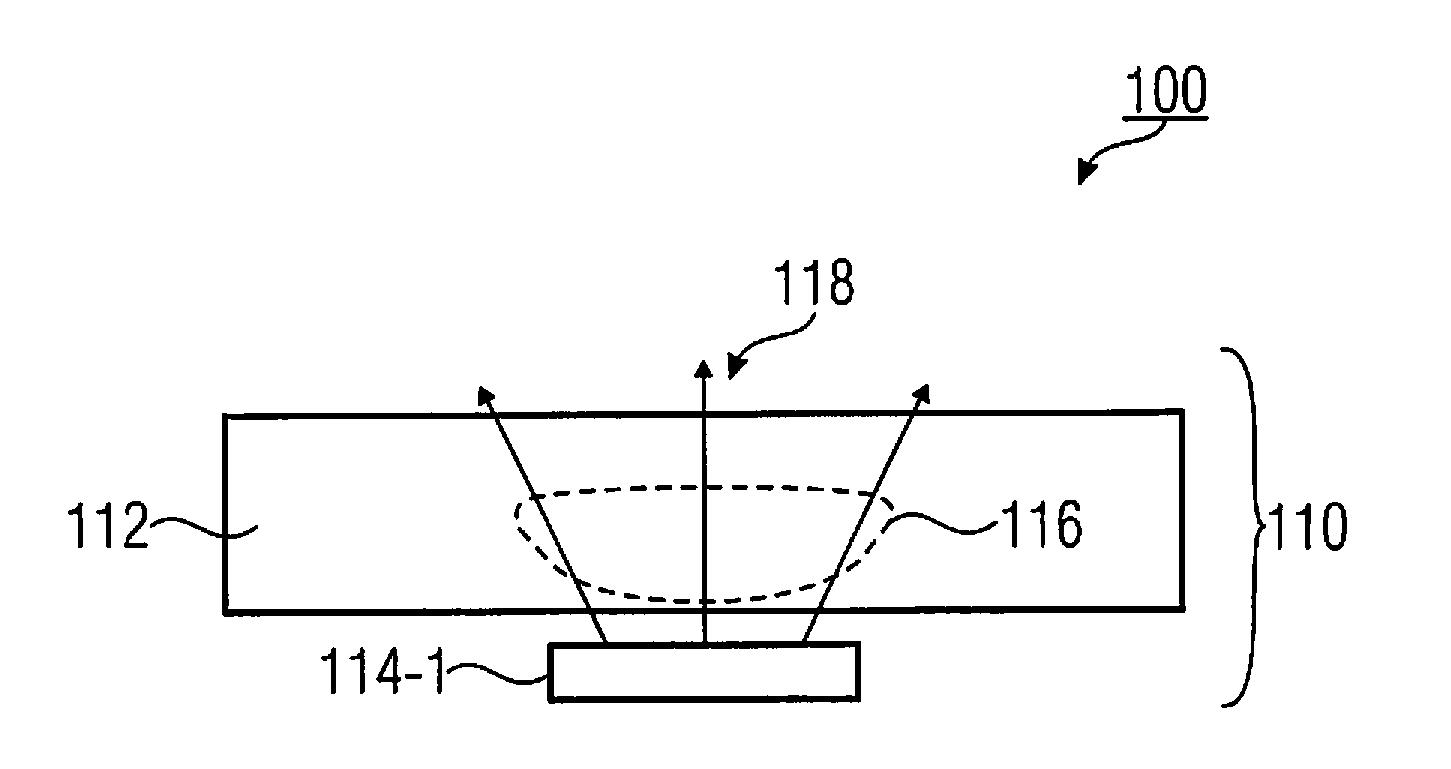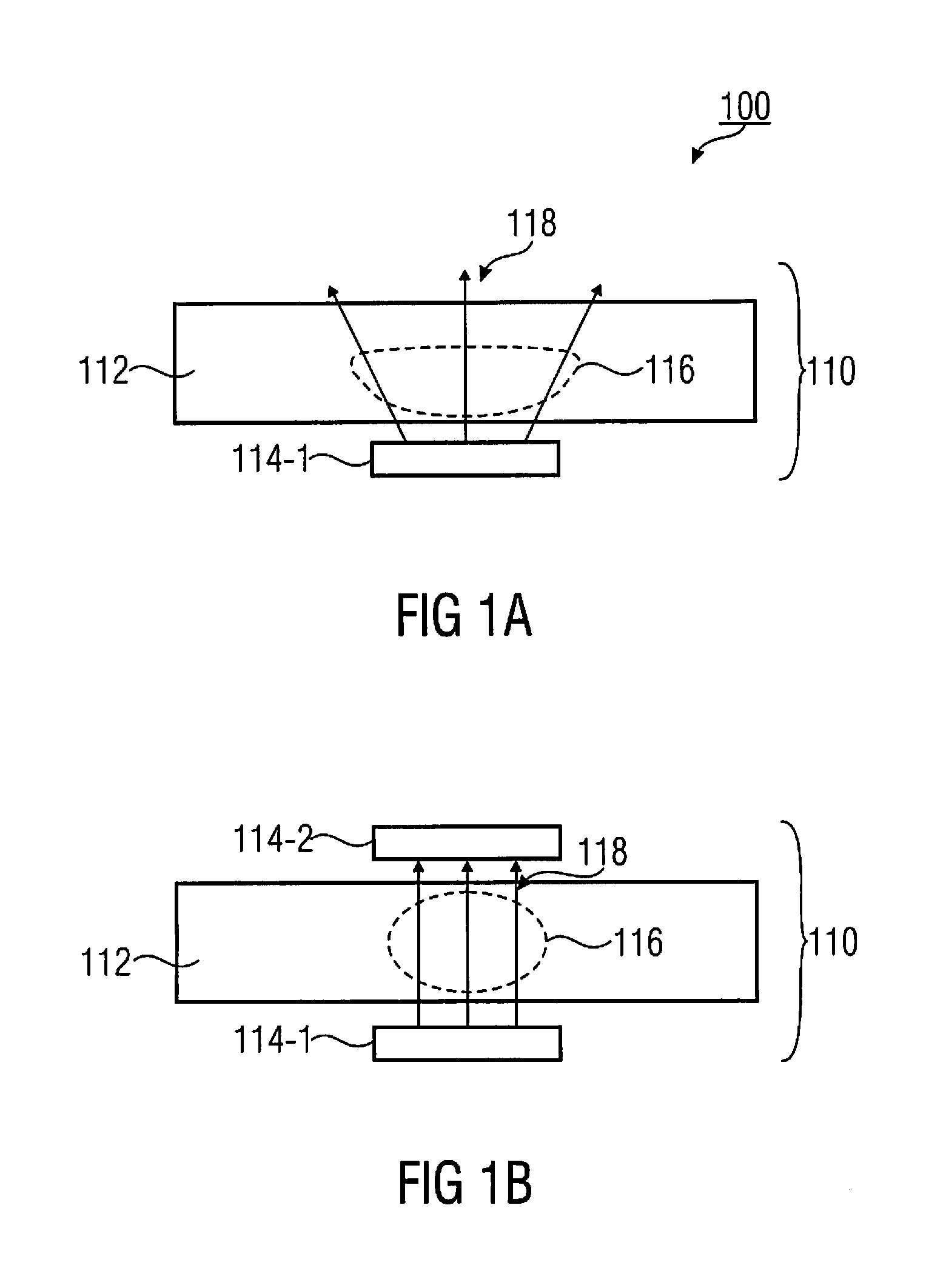Apparatus and Method for Guiding Optical Waves
a technology of optical waves and apparatus, applied in the field of optical communication devices, can solve the problem that the geometry of optical waves cannot be changed anymor
- Summary
- Abstract
- Description
- Claims
- Application Information
AI Technical Summary
Benefits of technology
Problems solved by technology
Method used
Image
Examples
Embodiment Construction
[0045]In optical communication systems fast modulation and switching of optical signals as well as sub-nanosecond switching times are important functions. One effect that can be exploited successfully to obtain such functionalities is the electro-optic (EO) effect, which occurs in some materials. The electro-optic effect is a change in the optical properties of a material in response to an electric field. In an uniaxial (i.e., if the material has a single axis of anisotropy or optical axis) birefringent (i.e., decomposition of a ray of light into two rays, the ordinary ray and the extraordinary ray, when it passes through certain types of material) electro-optic material a refractive index change induced by a modulating external electric field is given by:
Δn=½n03rE+½n03RE2+ (2)
[0046]wherein the first term ½n03rE of the right side describes the so-called Pockels effect or linear electro-optic effect, which occurs in some non-centrosymmetric materials, while the second term ½n03RE2 o...
PUM
| Property | Measurement | Unit |
|---|---|---|
| electric field | aaaaa | aaaaa |
| electric potentials | aaaaa | aaaaa |
| electrical field inhomogeneities | aaaaa | aaaaa |
Abstract
Description
Claims
Application Information
 Login to View More
Login to View More - R&D
- Intellectual Property
- Life Sciences
- Materials
- Tech Scout
- Unparalleled Data Quality
- Higher Quality Content
- 60% Fewer Hallucinations
Browse by: Latest US Patents, China's latest patents, Technical Efficacy Thesaurus, Application Domain, Technology Topic, Popular Technical Reports.
© 2025 PatSnap. All rights reserved.Legal|Privacy policy|Modern Slavery Act Transparency Statement|Sitemap|About US| Contact US: help@patsnap.com



